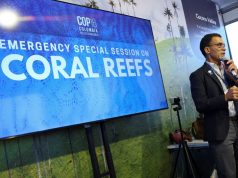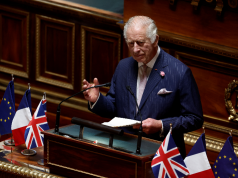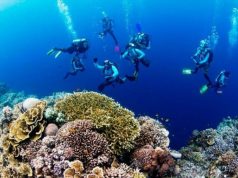
A market at Alabang, Muntinlupa City was seen selling parrot fishes, the species responsible for preserving the ocean’s rapidly depleting coral reefs.
Facebook user Reg Carlotta wrote that she was buying meat and seafood at the market one morning when she chanced upon a stall selling parrot fishes. She attached photos on her post.
“I literally stopped and said ‘that’s not good and that’s not right’ while taking pictures. Wawa naman the parrot fishes! Yes, pwede kainin but for us divers this is a big no,” Carlotta said on April 15.
“There are important reasons why we should not eat them and dapat we should educate the fishermen to stop catching these beautiful fish! Please do spare them. The ocean needs them to regenerate,” she added.
PARROT FISH ARE IMPORTANT!!This morning I went to the market (Alabang market) to buy meat and seafood for the whole…
Posted by Reg O. Carlotta on Sunday, April 14, 2019
This is the second time someone denounced the selling of these fishes at a local market.
In October 2018, a Facebook user also posted photos of parrot fishes being sold at a wet market.
Filipinos often find these marine creatures as aquarium pets or seafood fare.
However, there is no specific law in the country that prohibits their trade locally and internationally.
The Wildlife Resources Conservation and Protection Act also does not particularly consider the collection of threatened species as illegal.
In Section 23, it is stated that:
“The collection of threatened wildlife, as determined and listed pursuant to this Act, including its by-products and derivatives, shall be allowed only for scientific, or breeding or propagation purposes.”
Importance of parrot fish
Parrot or loro fishes are colorful herbivores that eat algae and dead corals off coral reefs, and then excrete this diet into coral sand.
This sand will eventually replace the sand particles being washed off in beaches. They also help get rid of algae that are harmful to refs.
They thrive where the major coral reef formations are found, namely, the Carribean, the Pacific, the Atlantic and Indian regions.
It follows that the parrot fish industry is seen in these places, particularly in the Carribean.
So far, the International Union for Conservation of Nature or IUCN does not consider its global population as at risk of extinction.
The organization only declared it at risk in certain areas such as the Coral Triangle. These include the Philippines, the Solomon Islands and Indonesia.
Another study by the organization found that Caribbean reefs have been suffering from algae dominance since the mid-1990 due to the sharp decrease of parrot fishes.
Carlotta noted in her post that algae levels remain high despite the parrot fish’s declining population.
“There is a reason for their existence so please let’s not eat them. Alamin natin bago natin kainin. To our government, please educate naman our fishermen. Say no to catching parrot fish! Let’s not buy parrot fish so they won’t catch them anymore,” she said in her post.









